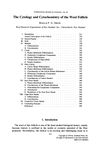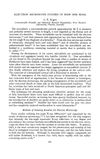Hair structure anatomy and comparative anatomy1 1Dedicated to the memory of the late Dr. R. E. Rivett whose untimely death prevented his role in co-authorship.
March 2001
in “
Clinics in dermatology
”
TLDR Human hair is complex and grows in cycles starting from embryonic life.
Human hair, often described as a "mini-organ," is highly complex, consisting of the hair shaft and the root, which includes the hair follicle and its associated structures. The hair follicle undergoes a continuous cycle of growth and regression, regulated by a sophisticated interaction between stem cell niches and signaling pathways. Hair development begins around the 8th week of embryonic life and involves three phases: induction, organogenesis, and cytodifferentiation, requiring close interaction between the ectoderm and mesoderm through various biochemical signals. Initial hair growth occurs in waves and differs from terminal hair, which appears between 12 and 18 months. Understanding these processes is crucial for interpreting drug incorporation into hair, especially in early childhood.
View this study on sciencedirect.com →
Cited in this study
3 / resultsresearch The Fate of Trichohyalin
Trichohyalin is modified by enzymes to form strong structures in hair cells.

research The Cytology and Cytochemistry of the Wool Follicle
Wool follicles are complex, involving interactions between different cell types and structures.

research ELECTRON MICROSCOPE STUDIES OF HAIR AND WOOL
Hair and wool have complex microscopic structures with microfibrils and varying cystine content.